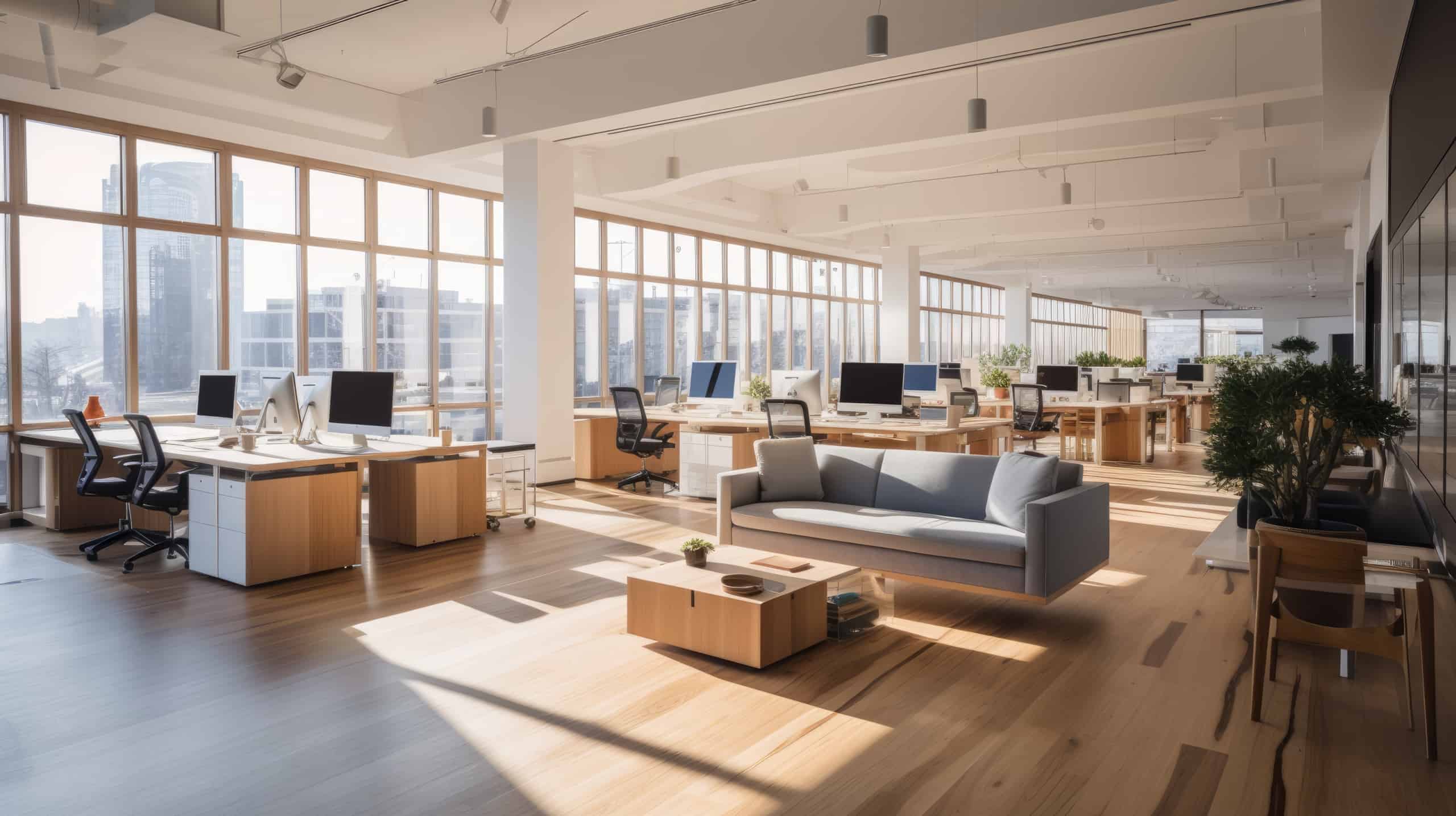Hybrid-remote is here to stay, but what’s next for office design?
The biggest trend in 2022 was COVID-related office design and furniture: how businesses adjusted to the big return-to-work and navigated society recovering from the peak of the pandemic. In 2023, the biggest trend was the ways in which businesses adapted their offices for the hybrid-remote workforce. With the hybrid-remote workplace here to stay, let’s look at how that workplace reality continues to shape office design and furniture and look ahead to continued evolution in 2024 and beyond.

Hybrid-Remote Challenges
Arguably, the biggest difference between office design for the hybrid workplace and design for the traditional workplace is the type of activity the design prioritizes. In past year, the top priority was providing dedicated desks where employees could focus and complete work. Today, high-focused work can be completed at home just as easily as in the office. In the hybrid model, the primary goals of coming into the office are socializing and collaborating with coworkers and making connections that are more difficult to achieve virtually. This fundamental change in office use has led to a number of challenges that are driving the need for office redesign projects. Here are a few examples of these challenges:
- The shift has left offices with too many private workstations and too few collaborative spaces and, thus, the need to rectify the imbalance.
- The increased use of virtual meeting solutions and the desire to have private conversations means that offices have too few privacy pods for phone calls and small huddles.
- With businesses better adjusted to virtual meetings, the need for large conference rooms has decreased. Many businesses are stuck with underutilized large conference rooms and want to repurpose them.
- For some businesses, the office is now too large and it makes economic sense to downsize the office space.

An office design and furniture dealer can help you address these challenges but solving them is not easy. The 2024 office design trends look to offer solutions befitting the modern office and workforce. The goals continue to be cost-effective and collaborative spaces that offer ample privacy and distraction-free work areas. Space must also be flexible to accommodate the hybrid-remote schedule and offer appropriate accommodations for limiting the spread of airborne illness. Naturally, workstations are more likely to be shared, not dedicated to one employee. Flexibility and shared workstations are elements that are commonly associated with an open office layout.
Some of the top layout and furniture trends that help solve office design challenges, both new and old, include:
- Flexibility! The hybrid office should be about flexibility. Flexible policies permit employees to set their own schedules in terms of in-office days and, perhaps, in terms of hours worked. Flexible office layouts and office furniture help businesses maximize space and balance varying employee preferences and needs.
- Modular office furniture can help solve challenges by adding valuable flexibility to an office’s design. Different types of modular office furniture offer easy customization and reconfiguration of the office space. With modular office furniture, businesses can adapt to changing needs and maximize the use of space, increasing productivity and efficiency.
- Designing the office as a destination makes employees WANT to come back into the office. Businesses encourage in-office collaboration; one great way to do that is to make the office space enticing. Design some perks within the office, such as a nice lounge area where employees can sit and chat over coffee. Offer comfortable zones with resimercial furniture that feels more like home than an office. Provide access to a fitness area—or even somewhere to nap!
- Attractive multi-purpose cafeterias. How businesses and employees use cafeteria space has been evolving for a long while, but the recent “return to the office” after COVID and hybrid remote work schedules have fueled a more aggressive evolution. Today, cafeterias are relied upon to serve multiple purposes; they are office attractions rather than just places to eat lunch.
- Collaborative break-out spaces enable collaboration with coworkers in a creative, supportive atmosphere. Offices tend to have too many workstations and too few collaborative spaces A common solution is huddle rooms Furniture for these spaces should be comfortable and inviting, mimicking the living room of a home.
- Limitless desk configurations. Desks should be configured to promote the highest productivity. Desk configurations may include height-adjustable desks, U-shaped desks, desks with overheads for storage or tackboards. Finding just the right combinations is important.
- Height-adjustable desks are great solutions for employees who are at their desks all day. Alternating between standing and sitting, an employee can relieve back strain, increase productivity, and burn more calories.
- Dividers / Partitions / Modular Walls separate space. There are many shapes and sizes of, as well as applications for, these elements of office furniture. Deciding how you want to divide up your office space determines the type that will work best.
- Phone / Privacy Booths and Pods offer employees quiet space to make a private call or work on a project that requires no distractions. They are also options for meetings for just a few people when privacy is needed.
- Sound Absorption / Noise Reduction can be a challenge for any office. Finding just the right acoustical solution is critical. Acoustic panels, baffles, or sound-masking systems can be beneficial, but complete soundproofing requires floor-to-ceiling walls.
- Resimercial furniture is softer and more comfortable than typical office furniture. These pieces have colors and design details that make the workplace feel more like home.
- Aesthetics, including plants, natural light, neutral colors, and covered or decorated walls, have been shown to have a positive impact on employees, leading to higher productivity and increased job satisfaction.


